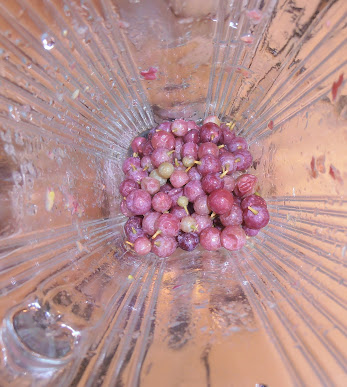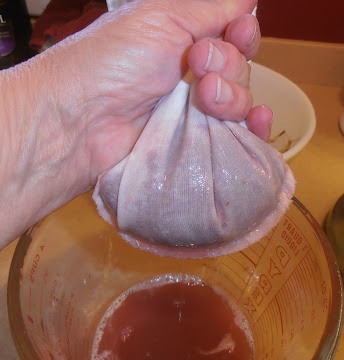I was given a copy of a Ken Albala book I did not know existed: Cooking in Europe 1250-1650, part of the Daily Life through History series published by the Greenwood Press in 2006. (Thank you, DS!)
 |
| ISBN 0-313-33096-4 |
Some of the recipes I had seen before, but many I had not and it was a fascinating read. It has several organizational lists which I found to be very helpful. One is by era (Middle Ages, Renaissance, and Late Renaissance and Elizabethan Era), and within it, subcategories (Cold Foods, Soups, Meat, etc.) The other is by country (France, England, Spain, Italy, Belgium, and Switzerland) with subcategories by era. There is a list of recipes for special occasions (novelty, holidays, illness).
Ken includes a glossary at the beginning of the book. Each recipe has a title and cites the source, location, and time period it came from. He also puts comments after the recipes to define unusual words specific to the recipe or to clarify a technique. Some of his comments help interpret the recipe to more modern, smaller quantities, since most of us are not cooking for large groups of people. Clearly he has tried most of the recipes, so his experience and knowledge of food history are a valuable aspect of this book.
I recommend it as worthwhile for a better understanding of historical cooking and to get a feel for how a master historical cook would approach these recipes.
Today was a cold and rainy day, which made it perfect for building a fire in my living room fireplace. This inspired me to cook something over that fire, and I found a recipe in Ken's book. On page 51 is A Good Sauce for Chickens, cited as from Italy in the 15th century, by "Anonimo Veneziano", which Ken says means "Anonymous Venetian."
To Make a good sauce for chickens, take pomegranate and make wine by hand, and place in this wine good sweet spices, and if it seems too strong, add pounded anise, or rosewater. Others use wine of sour pomegranates and wine of good sweet grapes, and place these two wines together with enough sweet spices. If you don't have grapes put in a bit of honey and let it boil, the spices should be raw, you don't want to let it stand so it spoils.
Ken notes that "wine" means "juice" and that the goal is a sweet-and-sour fruit sauce with spices.
It is winter, and my grape vine is merely empty twigs, but I did have a bag of frozen grapes from it. After they partially defrosted, I put them in batches into the blender to coarsely chop them. Then each batch went into a small cloth bag, where I squeezed out the juice. This resulted in grape juice that was light in flavor and tart, not sweet.
 |
| Grapes, stems and all |
 |
| Pulsed to coarsely chop |
 |
| Squeeze to nearly dry |
I also had a bottle of homemade pomegranate molasses. Using fruit from my own tree, I had mixed the juice with a little sugar and lemon juice, then reduced it to 1/4 of its volume. This stores the juice well for a long time and takes up a small space in my refrigerator.
I was ready to give this recipe a try.
My Redaction
3 large pieces of boneless, skinless chicken thighs (about 2 pounds total)
olive oil
1/4 cup pomegranate molasses
1/2 cup grape juice
1 teaspoon poudre fines (a mixture of cinnamon, cloves, ginger, grains of paradise, pepper, and saffron)
1 tablespoon honey
 |
| The honey and olive oil were added later. |
The chicken meat was coated on all sides with olive oil and placed on a hot, oiled grill over live coals. While it was cooking, I kept track of the heat from the coals and added more coals as needed. It took about 40 minutes to cook the meat through, turning it over once after about 20 minutes.
I mixed the pomegranate and grape juices with the spices, then tasted it. Both juices were tart, and the mixture was less tart than the molasses but still too tart for my preference. So I added the honey. The mixture was put in a small ceramic pan near the fire to begin warming it. Once the chicken was nearly done cooking, I put the pan on a trivet closer to the fire and with hot coals near one side. I stirred it with a fork often to even the heating through the liquid. Once it was steaming, I considered it ready.
 |
| Cozy, warm, and welcoming. |
 |
| Starting to cook the chicken |
 |
| Warming the sauce while the chicken cooked |
 |
| Heating the sauce in earnest |
 |
| Dinner is served! |
 |
| View from above. |
 |
| See how the bread soaked up the sauce? |
I thought the sweet-and-sour ratio was just right, too. It was not "balanced" as it was more on the sour side. The sweet was just enough to temper the sour; the sour was just enough tempered to make my taste buds tingle, my mouth water, and inspire me to take another bite. If it had been any sweeter, I don't think I would have had the same physical reaction, and I wanted that reaction.
It is possible I could have put in more spices, but I'm not sure I wanted them to be more prevalent. They were there and they added depth to the sauce. I really enjoyed the emphasis on the fruit flavors.
Success!
It was great fun cooking over fire in my home. It doesn't get cold enough in sunny Southern California to build fires often, so I take advantage of it when I can. It reminds me of the times I've spent demonstrating historical cooking to the public, which I miss. And the chicken, by itself, had that wonderful grilled meat flavor you can only get from cooking it over fire. Mmmmmmmmm!

No comments:
Post a Comment